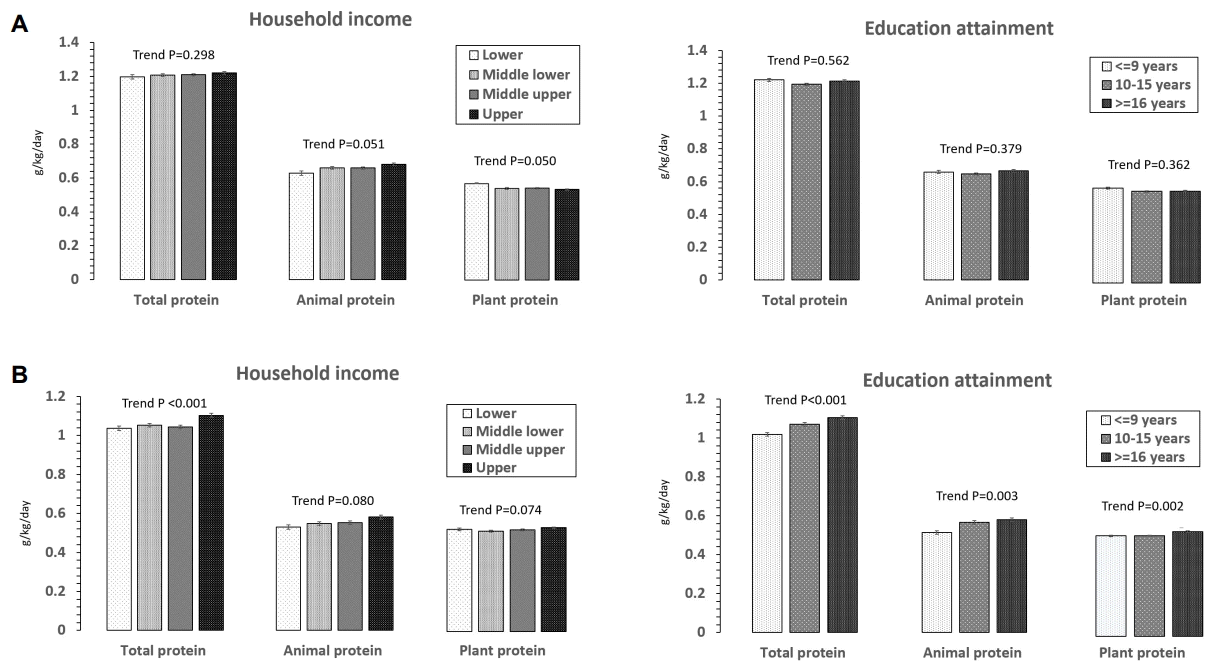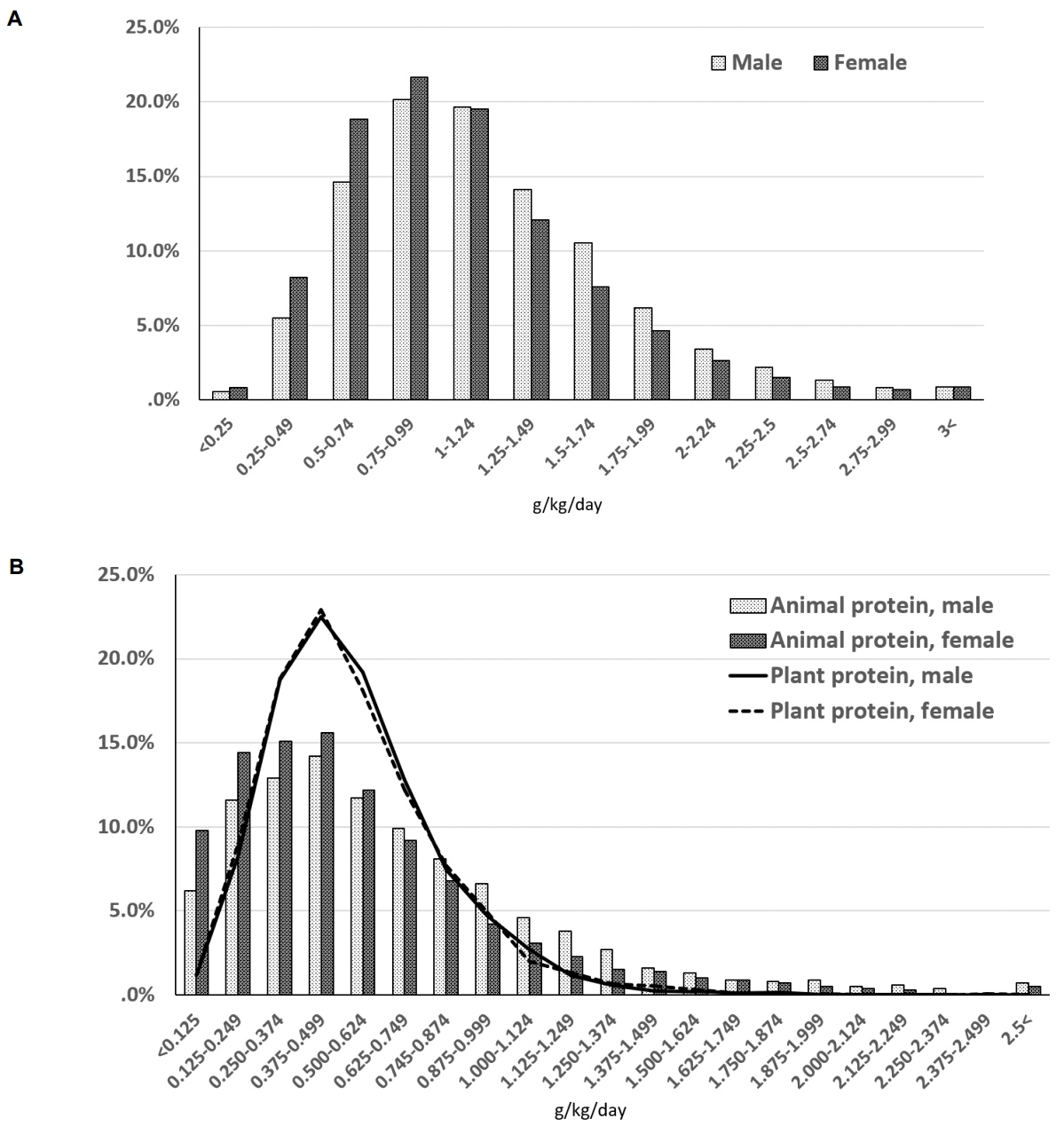1. Si Hassen W, Castetbon K, Cardon P, Enaux C, Nicolaou M, Lien N, et al. Socioeconomic indicators are independently associated with nutrient intake in French adults: a DEDIPAC study. Nutrients. 2016; 8(3):158.

2. Livingstone KM, Olstad DL, Leech RM, Ball K, Meertens B, Potter J, et al. Socioeconomic inequities in diet quality and nutrient intakes among Australian adults: findings from a nationally representative cross-sectional study. Nutrients. 2017; 9(10):1092.

3. van Rossum CT, van de Mheen H, Witteman JC, Grobbee E, Mackenbach JP. Education and nutrient intake in Dutch elderly people. The Rotterdam Study. Eur J Clin Nutr. 2000; 54(2):159–65.

4. Mayén AL, Marques-Vidal P, Paccaud F, Bovet P, Stringhini S. Socioeconomic determinants of dietary patterns in low- and middle-income countries: a systematic review. Am J Clin Nutr. 2014; 100(6):1520–31.

5. Kwon DH, Park HA, Cho YG, Kim KW, Kim NH. Different associations of socioeconomic status on protein intake in the Korean elderly population: a cross-sectional analysis of the Korea National Health and Nutrition Examination Survey. Nutrients. 2019; 12(1):10.

6. Korea Centers for Disease Control and Prevention (KCDC). Korea Health Statistics 2018: Korea National Health and Nutrition Examination Survey (KNHANES VII-3) [Internet]. Cheongju: KCDC;2019. [Accessed Apr 6, 2020]. Available from:
https://knhanes.cdc.go.kr/knhanes/main.do.
7. Korea Nutriton Society. Dietary Rerefence Intakes for Koreans. 2015.
8. Yanagi N, Hata A, Kondo K, Fujiwara T. Association between childhood socioeconomic status and fruit and vegetable intake among older Japanese: the JAGES 2010 study. Prev Med. 2018; 106:130–6.

10. Park HA. Adequacy of protein intake among Korean elderly: an analysis of the 2013-2014 Korea National Health and Nutrition Examination Survey Data. Korean J Fam Med. 2018; 39(2):130–4.

11. Song M, Fung TT, Hu FB, Willett WC, Longo VD, Chan AT, et al. Association of animal and plant protein intake with all-cause and cause-specific mortality. JAMA Intern Med. 2016; 176(10):1453–63.

12. Halkjaer J, Olsen A, Bjerregaard LJ, Deharveng G, Tjønneland A, Welch AA, et al. Intake of total, animal and plant proteins, and their food sources in 10 countries in the European Prospective Investigation into Cancer and Nutrition. Eur J Clin Nutr. 2009; 63 Suppl 4:S16–36.

14. Hernandez EM, Margolis R, Hummer RA. Educational and gender differences in health behavior changes after a gateway diagnosis. J Aging Health. 2018; 30(3):342–64.

15. Darmon N, Drewnowski A. Does social class predict diet quality? Am J Clin Nutr. 2008; 87(5):1107–17.

16. Liberatos P, Link BG, Kelsey JL. The measurement of social class in epidemiology. Epidemiol Rev. 1988; 10:87–121.

17. Daly MC, Duncan GJ, McDonough P, Williams DR. Optimal indicators of socioeconomic status for health research. Am J Public Health. 2002; 92(7):1151–7.

18. Galobardes B, Morabia A, Bernstein MS. Diet and socioeconomic position: does the use of different indicators matter? Int J Epidemiol. 2001; 30(2):334–40.

19. Alkerwi A, Vernier C, Sauvageot N, Crichton GE, Elias MF. Demographic and socioeconomic disparity in nutrition: application of a novel Correlated Component Regression approach. BMJ Open. 2015; 5(5):e006814.

20. Darmon N, Drewnowski A. Contribution of food prices and diet cost to socioeconomic disparities in diet quality and health: a systematic review and analysis. Nutr Rev. 2015; 73(10):643–60.

21. Krieger N, Chen JT, Selby JV. Comparing individual-based and household-based measures of social class to assess class inequalities in women's health: a methodological study of 684 US women. J Epidemiol Community Health. 1999; 53(10):612–23.

22. Willett WC. Nutritional Epidemioloty. 3rd ed. Oxford: Oxford University Press;;2012.
23. Park HA. Rate of missing socioeconomic factors in the 4th KNHANES. Korean J Fam Med. 2012; 33(6):406–9.






 PDF
PDF Citation
Citation Print
Print




 XML Download
XML Download